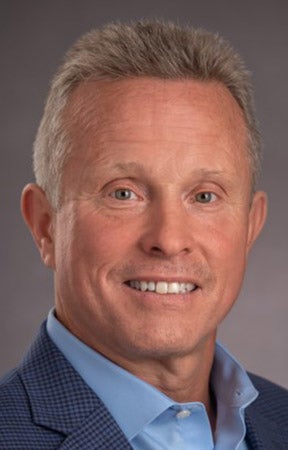The cause of environmental justice has been hijacked
Published 9:06 am Monday, March 29, 2021
|
Getting your Trinity Audio player ready...
|
By Jerry Cifor
President of Green Ridge Recycling and Disposal
For decades, low-income communities and communities of color have been targeted locations for so-called “undesirable” projects, such as incinerators, landfills or energy plants.
In some cases, that has caused disproportionately higher incidents of environmental damage, decreased property values and other hardships for those who live near these projects. Fortunately, awareness of this demographic targeting has risen, and companies are being held accountable for – and often prevented from – exploiting these communities.
Simply put, targeting communities based on income and ethnicity is morally abhorrent. Neither the income level of a household nor the color of skin of those who live there should be a factor in whether a community will be home to a project. It’s, therefore, appropriate that regulatory bodies and approval agencies look at this issue carefully to ensure that is the case. However, for the integrity of such a review and to ensure that poor and minority communities are protected, the issue of environmental justice cannot be allowed to be hijacked by groups who use it as a politically convenient tool. If affluent communities and non-minority populations claim to be victims of environmental injustice, it diminishes the communities that truly suffer from demographic targeting. Such is the case with the proposed Green Ridge Recycling and Disposal Facility in Cumberland County.
The 238-acre landfill, buffered by 800 acres of timberland, is proposed to be built along the Cumberland-Powhatan County border. By all objective measures, the proposed Green Ridge facility’s location does not disproportionately impact minorities or low-income communities.
A study done by one of Virginia’s leading independent economic analysis firms looked at residents living within one, three and five miles (equal to a 2.2 mile, 4.2 mile and 6.2 mile radius from center, respectively) of the tree-buffered property line of the proposed landfill. They found:
The percentage (19%) of Black residents within 6.2 miles is equal to that of the statewide population in Virginia (19%). Furthermore, the percentage (18%) of Black residents within 2.2 miles and the percentage (18%) of Black residents within 4.2 miles is slightly less than of the statewide population (19%).
The median household income within 2.2 miles, 4.2 miles and 6.2 miles ($54,614, $54,520 and $52,948, respectively) is significantly higher than the median household income in rural localities of Virginia ($40,153).
More than 80% of the people living within one, 2.2, 4.2 and 6.2 miles of the facility are white, and they make significantly more money than people in other rural areas of Virginia. Furthermore, the median income of households closest to the facility is significantly higher than the median household income countywide. Similar findings can be said of home values and employment levels.
Does that sound like a case of environmental injustice? Hardly. The loudest voices opposing the project are more affluent, white people from the neighboring, wealthier county.
This project was carefully planned to ensure it respected the principles of environmental justice. Unfortunately, some Powhatan County residents have seized the banner of environmental justice and used it as powerful cover for stopping a project that they simply don’t want near their backyard. A few local Black residents also oppose the project. They are regularly quoted and promoted by environmental groups, environmental justice advocates and affluent, white neighbors who oppose the project.
The fact remains, Green Ridge is supported by four of the five members of the Cumberland County Board of Supervisors (including both Black members), and the landfill was at the forefront of voters’ minds when they cast their ballots to elect this board.
The Green Ridge team believes in environmental justice and is committed to protecting the cultural integrity of the area. That includes protecting the nearby Rosenwald School building, where Black students attended during segregation. Green Ridge has designed its facility to not disrupt the road in front of the school and to minimize visibility from the schoolhouse with appropriate natural and enhanced buffers. Green Ridge also has repeatedly offered to help fund the rehabilitation of the school. Remarkably, opponents have rebuffed these offers and continued to use the school as a rallying cry against the proposed project.
It’s one thing to oppose a project because you don’t want it. But it is offensive to accuse a company of targeting minorities and low-income neighborhoods when the charge is patently untrue. Worse, it undermines the legitimate cause of environmental justice, which is an important issue based on data and factual analysis, and one that industry, government and the general public can work collaboratively to support.
JERRY CIFOR is the president of Green Ridge Recycling and Disposal Facility and has more than 30 years of experience in the waste management industry. He is a passionate environmentalist and has long supported the causes of social justice and racial equality.




